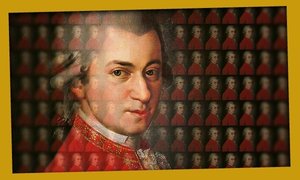Solti Hall:
Mozart: Flute Quartet No. 1 in D major, K 285
Featuring: Orsolya Kaczander, András Keller, Máté Szűcs, Louise Hopkins
Mozart: Piano Quartet No. 2 in E-flat major, K 493
Featuring: Dénes Várjon, András Keller, Máté Szűcs, Louise Hopkins

Wolfgang Amadeus Mozart: Flute Quartet No. 1 in D major, K 285
In September 1777, Mozart travelled to Paris in the company of his mother. They spent some time in Mannheim, a particularly inspiring city from the aspect of music. “You cannot imagine the high regard in which Wolfgang is held here by musicians and others. Everyone says that there is no-one who can compare with him, and they worship him for his compositions. I frequently do not even see him all day,” she wrote to her husband. This is also where Mozart met the Dutch amateur flautist Ferdinand De Jean. He commissioned Mozart to write flute concertos and four flute quartets. The Flute Quartet in D major was completed at Christmas and is considered the most successful of the series. The melancholic lead role is taken by the flute; the principal subject of the first movement could serve as a model for the young Beethoven: the opening movement of the clarinet-bassoon duet (1792) unmistakeably harks back to the Mozart composition. Perhaps the most memorable moment in the flute quartet is the melody of the sentimental, yearning slow movement in H minor, which just a few years later was revived in the immortal Adagio of the Piano Concerto in A major.
Wolfgang Amadeus Mozart: Piano Quartet No. 2 in E-flat major, K 493
This piano quartet was born in Vienna in June 1786 (around the time of the composition of The Marriage of Figaro). Its general tone is fundamentally cheerful. From many aspects, its first movement resembles the Piano Concerto in E-flat major (K 482), characterized by flowing thematic invention and generous formation. The Larghetto in the especially dreamlike key of A-flat major is one of the most beautiful examples of confessional, intimate Mozartian slow movement, a grandiose sonata form in the coda of which the composer evokes the moving gestures of veiled farewells. The closing movement is one of the few pieces that Mozart made later changes to: instead of the original predominantly contrapuntal concept, he made do with contrapuntal episodes. The virtuosity of the grandiose piano fantasies is also evoked in parts.
